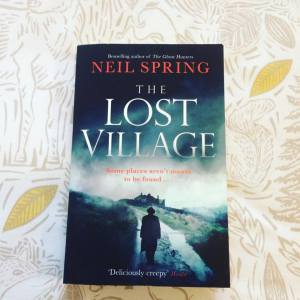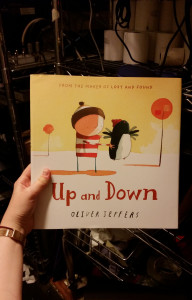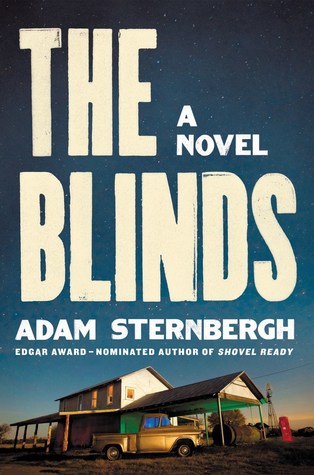 As some of you may know, I recently read the latest novel by Neil Spring; The Lost Village. I really enjoyed the book, loving the way that the use of history and the supernatural combined to produce such an atmospheric read. It was certainly a great choice of book to start my October reading with and I would recommend it to anyone looking for something to add to their Halloween reading pile. My review of the book can be seen here.
As some of you may know, I recently read the latest novel by Neil Spring; The Lost Village. I really enjoyed the book, loving the way that the use of history and the supernatural combined to produce such an atmospheric read. It was certainly a great choice of book to start my October reading with and I would recommend it to anyone looking for something to add to their Halloween reading pile. My review of the book can be seen here.
When I was lucky enough to be offered the chance to ask Neil some questions about his new book, I naturally jumped at the chance, and I am extremely excited to be able to bring you his answers today. So, if you want to hear more about the book from the author himself, read on!
This is your second fictional novel to feature ‘notorious ghost hunter’ Harry Price and his assistant Sarah Grey. Where did the idea for this next novel come from and how did it develop?
When my debut novel, The Ghost Hunters, was adapted into a television film for ITV (Harry Price: Ghost Hunter), Quercus suggested that readers would be excited to read more about the adventures of the enigmatic Harry Price and his intrepid assistant, Sarah Grey.
Harry Price was a real psychical investigator; a maverick who achieved infamy during the inter-war period for his otherworldly investigations, and although this story is entirely imaginary, some of it was inspired by Price’s own writings and experiences. Price was an elusive character; to some, he was a scientist, a discoverer who was determined to prove the truth about life after death; to others, he was a fierce sceptic, the scourge of every spiritualist medium in London with something to hide.
Writing The Lost Village, I visited the Harry Price Magical Library at the University of London, Senate House, where shadows stalk the dusty stacks and secrets linger. The library used to be based on the eight floor of Senate House. The only way up was via a small lift, the same size and shape as a telephone box. The librarians used to call this “the coffin.”
I plundered the archives, re-discovered Price’s investigations, his letters and articles. Then wove a story around those elements, exploring the many aspects of this fascinating character and discovering what set him on his path of investigation into the unknown.
The novel focuses largely upon the village of Imber and its troubling past. This is an especially poignant idea because of its grounding in realities; Imber is a real village in England which was abandoned during the war. How did you deal with the problem presented by this with regards to historical accuracy? Did it hinder or help the writing process?
A genuine ‘ghost town’, Imber truly is a creepy location: remote, dangerous and eerily deserted. In many ways, Imber is a monument to the horrors of war. The story of the village is a story of sacrifice. Tales of the supernatural don’t have to terrify; they can be beautifully sad, and what happened to Imber and its residents, in many ways, was just tragic. These houses had been homes for families and friends and lovers. A vanished community. Noble people, who had left those homes behind for a greater good; who had gone peacefully, with fortitude and courage. There was something irresistible to me about that idea. You read about haunted houses all the time. But a haunted village? I just couldn’t resist!
I took inspiration from the bare historical facts but the rest was fiction. As an author, you take that licence to bring your story to life, but I was guided by factual accounts. For example, it’s a long tradition that in the winter months, Imber reopens to the public and a service is held in its church, which stands behind barbed-wire fences. Strange occurrences have been reported. In one report, voices were heard coming from empty buildings, along with the smell of cooking food. In another, dogs were heard barking from behind an abandoned manor – Imber Court – though no animals were ever found at the site.
Perhaps most hauntingly, the metallic sounds of hammer striking an anvil have been heard; a report which evokes the long-rumoured grief of the villager’s blacksmith, who reportedly died of a broken heart after the evacuation.
With such tales coming from an authentic “ghost village”, a spectral tale inspired by the history of Imber and its ghostly-goings on was an irresistible inspiration for a novel based on the inter-war investigations of the enigmatic paranormal debunker, Harry Price.
It will be clear to anyone who has read this novel that the village is in many ways personified, becoming a character in its own right. Was this a difficult technique to achieve and how crucial do you view the setting to a novel?
I did visit when I was much younger but not when writing the book. As an author, you take liberties. I wanted some distance to reimagine a haunted landscape, a village of barren beauty that was eternal, a place where the past and present meet in uneasy union. And it occurred to me writing the book that Imber’s decaying houses weren’t just the relics of neglect; they were the causalities of trauma. Time hadn’t simply frozen in Imber; time was wounded, permanently in pain. There was something intensely creepy about that idea that I hope comes through in the book. It occurred to me writing this book that Imber’s decaying houses weren’t just the relics of neglect; they were the causalities of trauma. Time hadn’t simply frozen in Imber; time was wounded, permanently in pain. And perhaps, still waiting for its residents to come home.
There are lots of gothic tropes within this novel, including the past infringing upon the present, threatening landscapes/buildings, and of course, the supernatural. What is it that draws you to the elements of this genre?
I see this as a ghost story involving gothic tropes. The power of a ghost story lies in what is suggested rather than what is seen. They play on our primal fear of the dark and our anxieties about our psychological well-being. People love to feel scared. It’s part of human nature. Perhaps that is why ghost stories possess such enduring appeal. With their glimmers on intruding presences, they seduce us with a controllable unease that we can prepare for and perhaps even gain mastery over through reading. We can feel the fear but, when the last page is turned, we can put that fear away again in a way we can’t always do the terrors of real life.
As already mentioned, this is your second novel to feature Harry and Sarah. Did you find it harder to return to the characters for a second time, or was it easier because of what had previously been established in the first novel?
It was like seeing old friends again to be honest. The Lost Village is a commentary on a bygone age. The characters who interacted with Harry Price were part of grieving nation – in some ways a desperate nation – that needed something to believe in after the atrocities of the First World War. It was an era choked with grief and longing for hope. In Harry and Sarah’s world we see a grieving nation, in some ways a desperate nation, that needed something to believe in. A pre-war world as remote as Imber itself.
There are multiple layers within this story, secrets hidden within secrets which draw the reader into the intricacies of the plot. Did you initially plan out the plot twists or did you find a more organic approach occurred as the novel evolved?
There’s a huge twist with the book that I don’t want to give away and that was the idea that piloted the direction of everything in the story. Sarah’s journey. Once I had that in place, the rest flowed.
Although you live in London you were originally born in South Wales. As a fellow Welshman (Cardiff born and bred), I’m curious as to whether this background has influenced your writing at all?
Only in so far that my second novel, The Watchers, is based in West Wales. That book deals with the subject of UFO sightings and a spate of a very unusual occurrences in the area back in the 1970s.
This is a very atmospheric read, with the supernatural, the speculative and reality combining to create a perfect Autumn read. As we head towards Halloween, what would be your perfect reading recommendations?
That’s a tough one, but my list would have to include: ‘The Signal Man’ by Charles Dickens; The Turn of the Screw by Henry James; The Winter Ghosts, by Kate Mosse and The Ghost Stories of Edith Wharton.
What would be your top tips for aspiring writers?
Write what you know. Write every day. Never give up.
Finally, a question I think many of your readers will want answered – do you think there lies a potential for more stories following Harry and Sarah?
My immediate plans are to focus on creating new, stand-alone books, but I wouldn’t rule out returning to the world of the Harry and Sarah if the right story suggested itself. The door is open to that potential but readers should prepare for something very dark and contemporary and stand alone for my fourth novel, publishing next year.
*
I want to say a massive thank you to both Neil himself, as well as Alainna from the press team over at Quercus, for this brilliant opportunity. The book is published today by Quercus on the 19th October 2017, so if this Q and A has inspired you don’t hesitate to grab your copy! The book is available here on Amazon.
As I think you can tell from Neil’s answers, this really is a fantastic ghost story to sink your teeth into. Do you plan on reading the book, or have you read any of Neil’s previous works? Let me know in the comments what you think!
Advertisements Share this:





